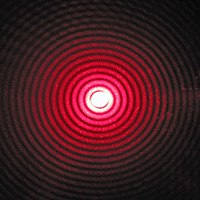
Photo from wikipedia
Parity–time (PT) symmetry has been demonstrated in the frame of classic optics. Its applications in laser science have resulted in unconventional control and manipulation of resonant modes. PT-symmetric periodic circular… Click to show full abstract
Parity–time (PT) symmetry has been demonstrated in the frame of classic optics. Its applications in laser science have resulted in unconventional control and manipulation of resonant modes. PT-symmetric periodic circular Bragg lasers were previously proposed. Analyses with a transfer-matrix method have shown their superior properties of reduced threshold and enhanced modal discrimination between the radial modes. However, the properties of the azimuthal modes were not analyzed, which restricts further development of circular Bragg lasers. Here, we adopt the coupled-mode theory to design and analyze chirped circular Bragg lasers with radial PT symmetry. The new structures possess more versatile modal control with further enhanced modal discrimination between the azimuthal modes. We also analyze azimuthally modulated circular Bragg lasers with radial PT symmetry, which are shown to achieve even higher modal discrimination.
Journal Title: Photonics Research
Year Published: 2018
Link to full text (if available)
Share on Social Media: Sign Up to like & get
recommendations!